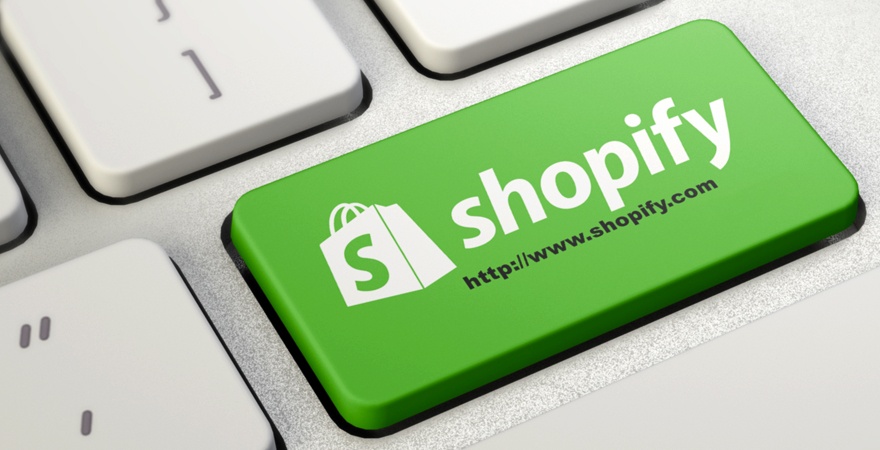Shopify Scams: How They Work
Shopify is a great platform that has created many successful entrepreneurs, but the Internet is also full of Shopify scams. We asked a series of experts to share their insights on deceptive practices that some people do when using the platform, so we have some great material to share with you below. Here are three Shopify scams to be aware of.
1. Triangulation Scam
The triangulation scam represents a nightmare for anyone selling products because it leaves victims without both product and any compensation.
Scam Detectors Most Trusted Websites in Online Security
- Guard.io (100): Surf the web safely. Clean up your browser, remove maliscious extensions and check for privacy violations.
- Incogni.com (100): Delete your personal data from the internet and protect against scams and identity theft.
- ExpressVPN (100) Stay secure and anonymous online - Best VPN Out There
- IPVansish (100) Fast VPN to stay safe and secure online with multiple discount plans.
Here is how a triangulation scheme works, according to Ian Kelly from NuLeaf Naturals:
“A scammer with stolen credit cards opens a shop that sells your products or similar items. When a customer purchases something through the scammer's Shopify store, the scammer uses stolen credit cards to purchase the item from you. Then he ships it to the customer. Because the credit card is stolen, there are chargebacks, leaving you without product and money. The scammer now has the money for the product that their customer paid them.”
A way to look for this is to check shipping and billing. “If the shipping and billing addresses are wildly different, it may be worth flagging as it could be a scammer charging the product to a stolen card and sending the product to their customer.”, says Kelly.
2. “Direct To Client” MyShopify Scam
A trick that is perpetrating a lot lately is the “direct to client” MyShopify scam. It has been happening ever since e-commerce began. Essentially, it occurs when a vendor wants to do the transaction outside of Shopify (where web stores have an .myshopify.com extension). The buyers, meaning the scammers, claim they are being charged high fees or say they want to help you get a discount.
“It seems obvious when laid out that simply, but in reality, these scammers play a longer game. They are doing legitimate transactions with you for a long time and then trying to move them outside of the platform. That's where you are not protected against fraudulent purchases and can't get your money back or report bad sellers”, explains Alex Azouri from Home Grounds.

“By building a relationship of trust, scammers convince you to make a purchase via PayPal or e-transfer, and either the money is gone in that transaction, or they send a fake Paypal invoice that will then phish your information.”
Azouri advises never to do transactions outside of Shopify or other platforms that have safeguards in place to protect customers and vendors alike.
“Often, because the buyer has no reason to doubt, they accept the request. Unfortunately, it is the loophole the seller needs to extract money from the buyer without delivering the product.”, says Reuben Yonatan, Founder of GetVoIP.
When else do you know how to detect Shopify scams?
3. All-In-One Red Flags of a Shopify Scam
If the Shopify website uses insistent persuasion and shady sales-boosting techniques (also known as dark patterns), it is more likely a scam. Let's go into detail on what these patterns usually are. Here is a perfect explanation from Akram Tariq Khan, co-founder of YourLibaas:
- Contact details are missing on the website or are not prominently featured (are hidden somewhere in their TOS or Privacy Policy).
- Shopify scams leverage the “fear of missing out” psychology of customers. A variety of maneuvers and dark patterns leverage this tendency. Social proof pop-ups display notifications of customers close to your location, which recently bought the product. You would see a flashing text message that says “x number of people are currently looking at this product,” which encourages one to buy on the premise that the stocks wouldn't last long enough. These techniques push the customer to make an impulsive purchase.
- Most of the products have only positive reviews with text similar to one another. All of them are simply 5 stars and endlessly praise the product. It's typical not only for Shopify scams but also for eBay scams.
- The aspect ratio of the product image seems off. This could be an attempt to crop off the watermarked image. Another red flag could be a specific portion of the image is blurry, or the brand has placed its watermark at an unusual place. Again, an attempt to get rid of a watermark.
- The grammar used within the product description is incorrect.
Shopify Scams: How To Report
Let your friends know about these Shopify scams by sharing the article here, on social media. You can also officially report crooks and any other suspicious activities to both Shopify admin and the FTC (Federal Trade Commission) using the link below:
How To Protect Yourself More
If you want to be the first to receive the most prevalent scams every week, subscribe to the Scam Detector newsletter. You'll receive periodic messages and emails – not spam.
On a different note, educate yourself with some other e-Commerce fraud-related articles below, so that you know how to stay safe online. Also, feel free to use the Comments section below to expose other scammers.
4 Types of e-Commerce Fraud Everyone Should Avoid
Identity Theft: How To Stay Safe
Verify a website below
Are you just about to make a purchase online? See if the website is legit with our validator:
vldtr®


TOP 4 MUST-WATCH FRAUD PREVENTION VIDEOS
1. Top 5 Amazon Scams in 2024 2. Top 5 PayPal Scams in 2024 3. How To Spot a Scam Email in 2024
- Latest Posts by Selma Hrynchuk
-
How To Stop Robocalls
- -
Taking Control of Your Data Privacy: Protecting Yourself in 2024
- -
The Urgency of Removing Personal Information from the Internet
- All Posts














Our experience with Shopify Plus has been nothing short of a digital nightmare. We decided to make the switch to Shopify Payments, thinking it would streamline our processes, but little did we know we were diving headfirst into a quagmire of incompetence.
First, they conveniently forgot to mention that it takes an agonizing two business days to get approved for Shopify Payments. Two days! In the fast-paced world of online commerce, that’s akin to asking us to sit on our hands while our competitors laugh all the way to the bank.
And when we realized Shopify Payments wasn’t cutting it, we made the sensible decision to revert to Stripe. But oh no, that was too much to ask. Without so much as a courtesy notice, they yanked the Stripe payment option from our account, like a thief in the night stealing our ability to make sales. We pleaded with them to reactivate it, but their feeble excuse was that Stripe is a competitor. Well, congratulations, Sherlock! That’s why we chose it in the first place.
Then came the grand spectacle of our website crashing on November 13th, right smack in the middle of our busiest hours. No explanation, no apology—just a black void where our sales should have been. It’s like Shopify decided to throw a wrench into our machinery just for the heck of it.
And if that weren’t enough, our payment methods were held hostage on December 4th. Days turned into an eternity as our payments account sat in limbo. Daily pleas for answers were met with the same generic response, “being handled by our Shopify Payments team.” Translation: We have no clue what’s going on, but we’ll string you along with empty assurances.
Now, they’ve reached the pinnacle of absurdity, claiming a “standard review” by their banking partner is the reason for the ongoing chaos. It’s just a flimsy excuse to cover up their own incompetence. Our patience is wearing thin, and Shopify Plus, with its shoddy practices, has become the bane of our existence.
Buckle up, because I’m about to unveil the sordid truth about the Shopify Plus scam. Hold onto your hard-earned money, guard your precious time, and, most importantly, shield your online business from this malevolent force. Their singular mission? To annihilate your business without a second thought. Don’t fall victim to their web of deception; it’s a perilous journey with Shopify Plus at the helm, ready to sink your ship of success. Stay vigilant, stay informed, and let the world know that Shopify Plus is more of a threat than a savior for your online endeavors.